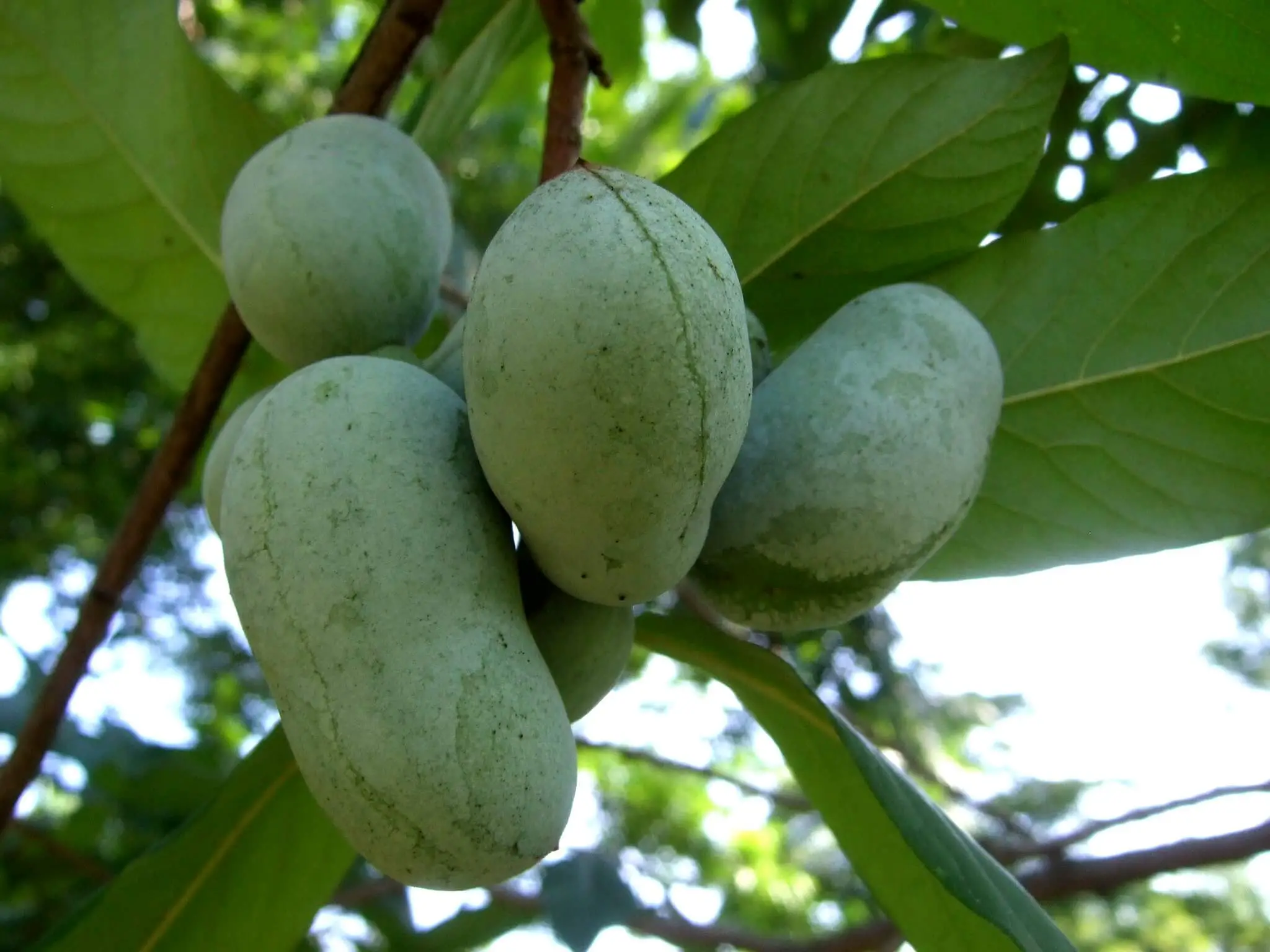5 Most Cold Hardy Pawpaw Varieties
September, 2022 |The American pawpaw is an amazing temperate fruit tree (Latin name Asimina triloba). For a temperate fruit species, it actually has a tasty tropical flavor, with hints of vanilla, banana, and mango. It’s one of the best fruit trees to grow in containers too for areas with a cooler climate.
But like many fruit trees, it has its limits when it comes to extremely cold temperatures. Luckily there are some great cold hardy pawpaw varieties you can choose from.
Which USDA zones can pawpaws grow in?
Pawpaws are most widely recommended for USDA zones 5-8. Like many temperate fruit trees, they need a period of cold weather to break their dormancy phase.
For pawpaws, it’s usually around 400 hours (approximately 17 days), which is why USDA zones 9 and above are usually too warm as the winters can be mild.
Pawpaw trees are usually recommended for zone 5 at a minimum, but many people report them thriving in zones 4a and 4b — from southeast Minnesota to Vermont.
Disclaimer: This post contains affiliate links. When you make a purchase through one of these links I may earn a commission. This comes at no extra cost to you.
Can you grow pawpaws in containers?
Yes definitely. You’ll need to choose a large container like this large classic planter that leaves room for the tree to establish a strong root system. An 8-20 gallon container is ideal (or 17-24inch diameter).

Whether you live in zones 5a, 4, or below, the varieties below are some of the hardiest pawpaw cultivars currently available.
1. Pennsylvania Golden Pawpaw
The Pennsylvania golden is a popular pawpaw variety that usually ripens in mid-September. This early ripening maximizes the shorter growing season in USDA zones 4-5. As its name suggests, the skin has a slightly golden hue, and inside it has deliciously sweet and creamy flesh.
USDA zone: 4-8
2. The NC-1 Pawpaw
While the name seems a little scientific, this pawpaw is a reliable and popular pawpaw variety. It was bred in Ontario, Canada by plant nursery owner Doug Campbell. It’s a variety that ripens early, in mid-September. And as it was bred in Canada, it definitely has a cold hardy edge!
USDA zone: 4-8
3. Taylor Pawpaw
Another cold hardy pawpaw variety that was cultivated in Canada. Green Barn farm claims that it’s hardy to temperatures of -40°C/F and therefore perfect for zones 2-4. This makes the Taylor pawpaw potentially the hardiest pawpaw currently available.
USDA zone: 2-8
4. Allegheny® Pawpaw
The Allegheny pawpaw ripens early to mid-September, which is perfect for areas with a limited growing season. The cultivar creator, Peterson Pawpaws, is so proud of this variety that it’s now a registered trademark.
USDA zone: 4-9

5. Rappahannock® Pawpaw
The Rappahannock papaw is another early ripening variety that you can usually start picking from mid-September. The flesh generally has a more custard yellow hue when compared to the pale yellow of other varieties. It’s another cold hardy pawpaw variety that’s been officially trademarked by Peterson Pawpaws.
USDA zone: 4-9
Growing pawpaws in zone 4 and below
If your area experiences harsh winters, you may need to take extra steps to protect your pawpaw tree throughout the winter.
- Make sure the tree receives a good amount of sunlight throughout the day, but be wary of leaves on young trees scorching in full sunshine. Placing your pawpaw tree in a south-facing position can help it receive more warmth throughout the day.
- If you’re growing the pawpaw as a fruit tree in a container, it won’t reach the heights and maturity of larger wild trees. This could leave your pawpaw tree a little vulnerable in harsh winters, so choosing a hardy variety is ideal if your area experiences winters that might hit -20 degrees Fahrenheit (USDA zone 5).
- Place the tree near a large hedge or wall if your garden is exposed to high winds. The wind chill factor could expose the tree to even lower temperatures.
For all of these cold hardy pawpaw varieties, note that you’ll need two trees for cross-pollination to produce lots of fruits.
Other cold hardy fruit and veg
Pawpaws are a brilliant fruit to grow with a delicious tropical taste when conditions aren’t ideal for tropical fruit. However, there are other cold tolerant fruit and veg cultivars that can handle cooler growing conditions too.
From melons suited to cooler climates, to more cold tolerant cucumber varieties. These varieties have been specially bred to withstand cooler summer conditions.
Like Neal Peterson from Peterson Pawpaws, there was a famous grape grower called Elmer Swenson who also bred several cold tolerant grape cultivars too. Including the Somerset Seedless and Petite Jewel.
Featured Image of Pawpaw fruits by Wendell Smith from Flickr





